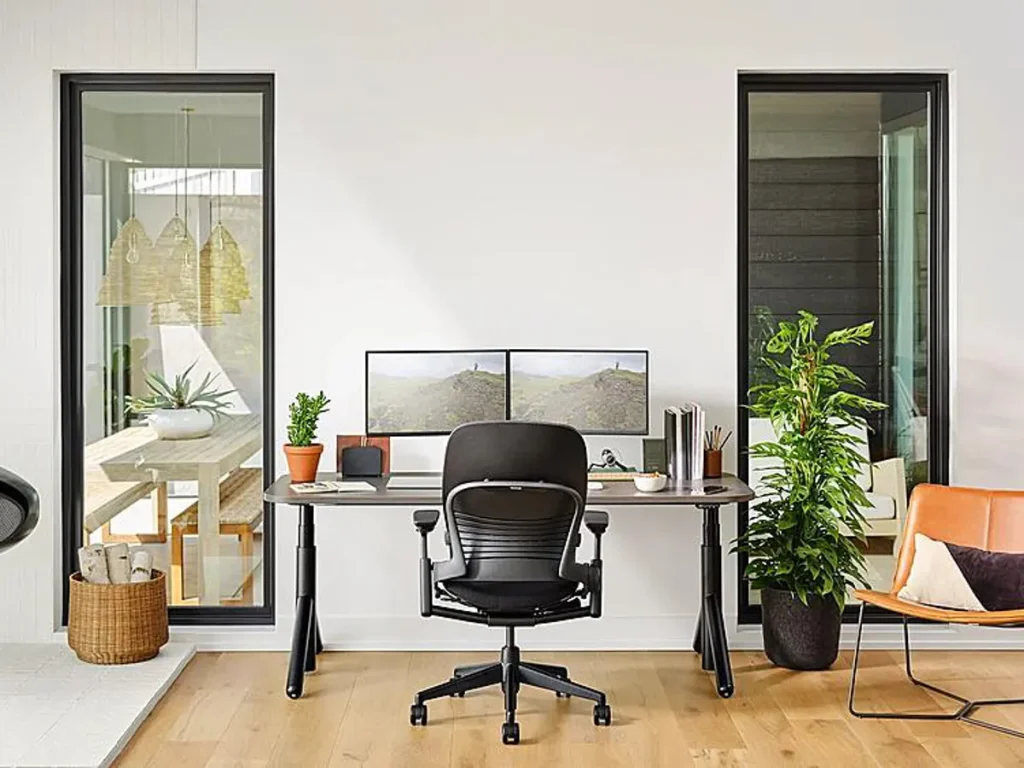Designing the Perfect Home Office: Ergonomics Essentials for Remote Work

The world of work has undergone a significant transformation in recent years, with remote work becoming more prevalent than ever before. As a result, the home office has become the new normal for many professionals. While working from home offers flexibility and convenience, it also comes with its own set of challenges, particularly when it comes to maintaining comfort and productivity. This is where ergonomic design comes into play.[1] In this article, we’ll explore the essential elements of designing the perfect home office for remote work, focusing on ergonomics to ensure a healthy, comfortable, and efficient workspace.
The Right Desk and Chair
The foundation of any ergonomic home office is a suitable desk and chair. Your desk should provide ample workspace for your computer, peripherals, and any documents you need to access. When choosing a chair, prioritize one with proper lumbar support, adjustable height, and comfortable cushioning.[2] A chair that promotes good posture can make a world of difference in your workday.
Ergonomic Keyboard and Mouse
Investing in an ergonomic keyboard and mouse can significantly reduce the risk of repetitive strain injuries (RSIs) and wrist discomfort.[3] Ergonomic designs are engineered to support the natural positioning of your hands and wrists, allowing for more comfortable typing and clicking.
Monitor Placement
Proper monitor placement is crucial for preventing eye strain and neck pain. Position your monitor at eye level, about 20 inches from your eyes, and ensure it’s at a comfortable viewing distance.[4] An adjustable monitor stand can help you achieve the ideal setup.
Adequate Lighting
Good lighting is essential for productivity and eye health. Position your desk near a window to maximize natural light. Additionally, invest in adjustable desk lamps or overhead lighting to reduce glare on your screen and maintain a well-lit workspace.
Cable Management
Cable clutter not only looks messy but can also be a safety hazard. Use cable organizers to keep wires tidy and out of the way. This not only improves the aesthetics of your home office but also prevents tripping hazards.
Ergonomic Accessories
Consider adding ergonomic accessories like a footrest, anti-fatigue mat, or laptop stand to further enhance your home office setup. These items can help reduce strain on your body during long hours of work.
Personalization and Aesthetics
While ergonomics is a top priority, don’t forget to personalize your workspace. Add a touch of your personality with artwork, plants, or decorative items. A well-designed and inviting workspace can boost your mood and overall job satisfaction.
Regular Breaks and Movement
No ergonomic setup can replace the importance of taking regular breaks and incorporating movement into your workday. Set a timer to remind yourself to stand up, stretch, and walk around. Consider using a sit-stand desk or a balance ball chair to encourage active sitting and posture correction. The OOHM’s Break app enterprise strategy towards helping workers overcome the adverse effects of prolonged sitting or standing while providing such benefits as improvement of posture and blood flow to muscles, prevention and remedy of back pain, and great stress relief.
Maintenance and Adjustments
Your ergonomic home office is not a set-it-and-forget-it affair. Regularly evaluate your setup and make adjustments as needed. Over time, your body may change, or you may discover better ways to optimize your workspace.
Designing the perfect home office for remote work goes beyond aesthetics; it’s about creating a space that promotes comfort, health, and productivity. By investing in ergonomic essentials like a suitable desk and chair, ergonomic peripherals, proper lighting, and thoughtful personalization, you can create a home office that not only meets your work needs but also supports your overall well-being.[5]
Consulting with Duergo Limited and receiving in-person training can help improve ergonomic practices significantly. They have a wealth of experience in optimizing home office setups for maximum comfort and efficiency. Furthermore, the office ergonomics and psychosocial self-assessment tools offered by OOHMS can also be invaluable resources for the home office. These tools can guide you through the process of identifying areas for improvement and making necessary changes to enhance your workspace.
Remember that an ergonomic home office is a dynamic space that may require adjustments over time, so stay attuned to your body’s needs and make changes accordingly. With the right setup and the support of these valuable resources, you’ll be well on your way to a more enjoyable and efficient remote work experience.
